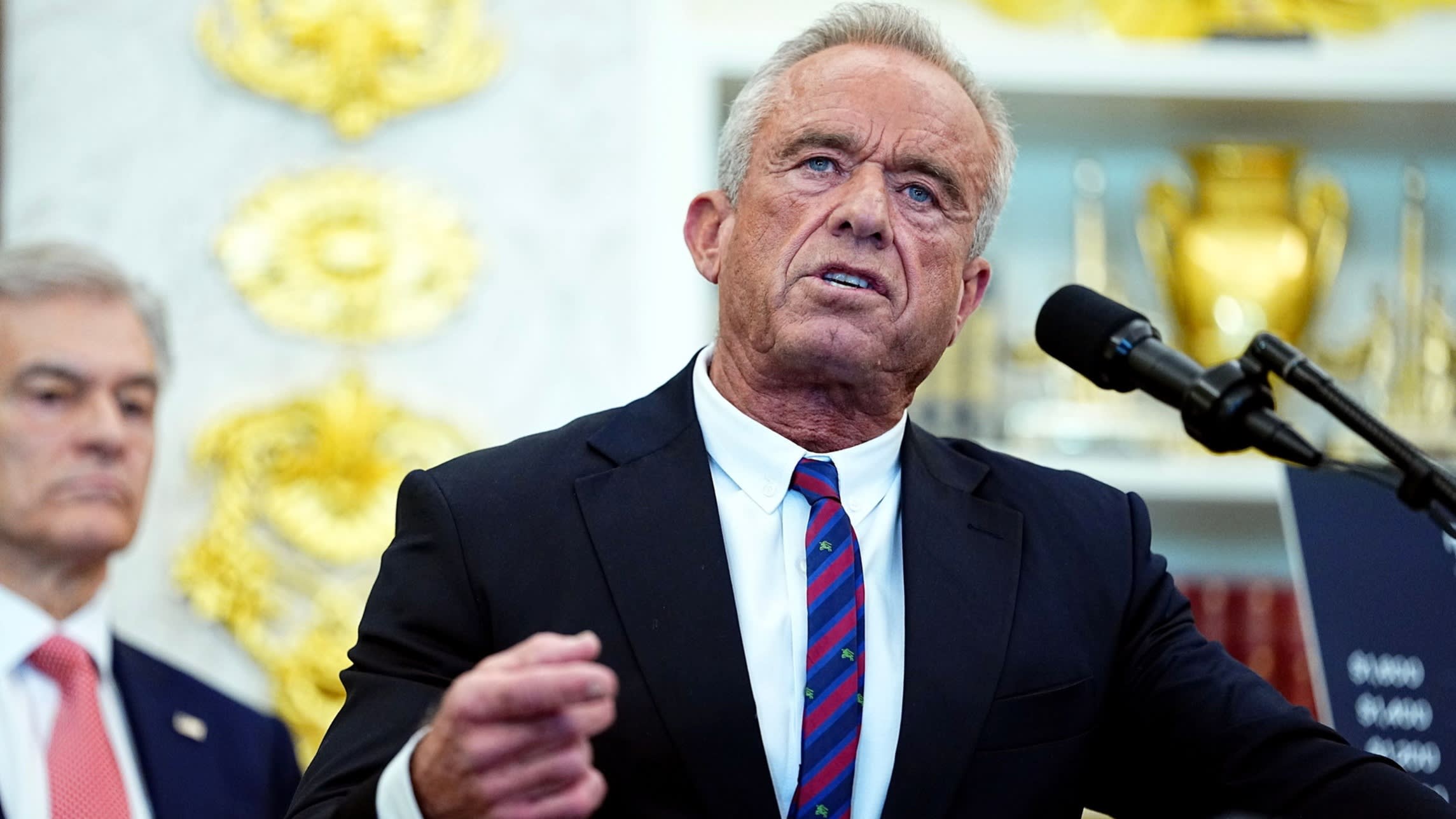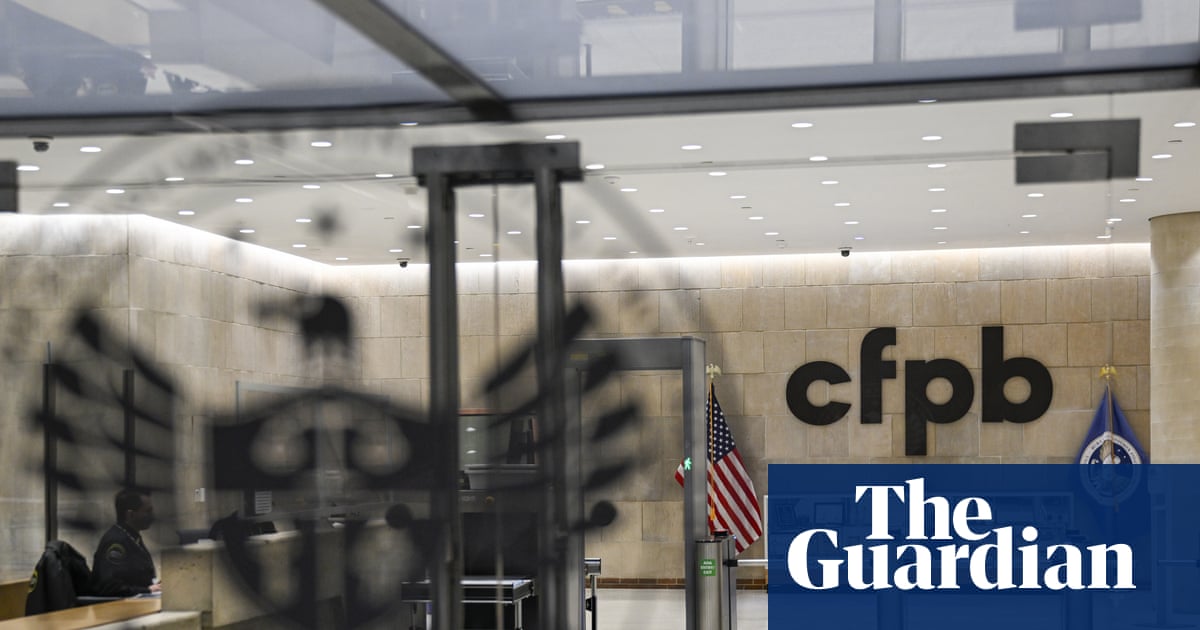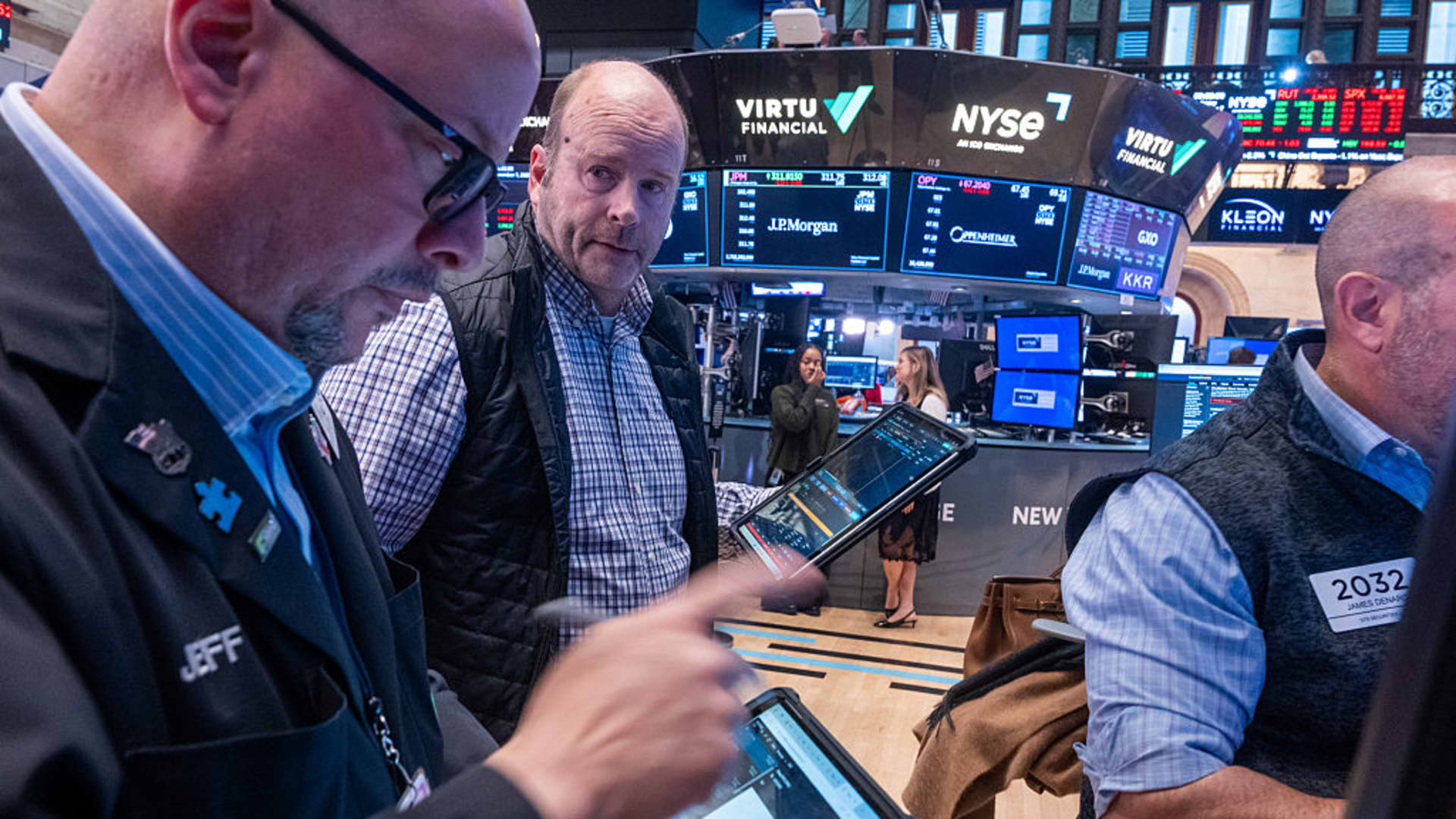- US drug regulator promotes veteran to quell unrest in top ranks Financial Times
- F.D.A. Drug Unit Chief Resigns, and Is Sued by Drug Company The New York Times
- Recon: Tidmarsh resigns as CDER chief amid inquiry, lawsuit; Kimberly-Clark to buy Tylenol maker Kenvue for $40B Regulatory Affairs Professionals Society | RAPS
- FDA’s top drug regulator sued by Canadian pharmaceutical company abcnews.go.com
- FDA Chaos Threatens Medical Innovation — and Patients’ Health Bloomberg.com
Category: 3. Business
-

US drug regulator promotes veteran to quell unrest in top ranks – Financial Times
-
Danaher to Present at Jefferies Global Healthcare Conference
WASHINGTON, Nov. 11, 2025 /PRNewswire/ — Danaher Corporation (NYSE: DHR) announced that President and Chief Executive Officer, Rainer M. Blair, will be presenting at the Jefferies Global Healthcare Conference in London, UK on Tuesday, November 18, 2025 at 11:00 a.m. GMT. The event will be simultaneously webcast on www.danaher.com.
ABOUT DANAHER
Danaher is a leading global life sciences and diagnostics innovator, committed to accelerating the power of science and technology to improve human health. Our businesses partner closely with customers to solve many of the most important health challenges impacting patients around the world. Danaher’s advanced science and technology – and proven ability to innovate – help enable faster, more accurate diagnoses and help reduce the time and cost needed to sustainably discover, develop and deliver life-changing therapies. Focused on scientific excellence, innovation and continuous improvement, our approximately 63,000 associates worldwide help ensure that Danaher is improving quality of life for billions of people today, while setting the foundation for a healthier, more sustainable tomorrow. Explore more at www.danaher.com.
SOURCE Danaher Corporation
For further information: John T. Bedford, Vice President, Investor Relations, investor.relations@danaher.com, Danaher Corporation, 2200 Pennsylvania Avenue, N.W., Suite 800W, Washington, D.C. 20037, Telephone: (202) 828-0850, Fax: (202) 828-0860
Continue Reading
-

Balancing Legacy and Reinvention at Target
November 11, 2025
In 2003, Michael Fiddelke joined Target as an intern on the finance team, and this coming February, he will take over as CEO. Over two decades, he has helped steer the company through economic headwinds, shifting consumer expectations, and a rapidly evolving retail landscape, all while trying to preserve the brand’s distinct identity. His vantage point on the intersection of finance, strategy, and operations gives him a rare perspective on how large organizations can adapt and evolve.
Continue Reading
-

In the News: Seth Ketron on Smart Spending Amid Holiday Hype – Newsroom
Seth Ketron, associate professor of marketing at the University of St. Thomas Opus College of Business, spoke with KSTP about how shoppers and retailers are approaching the holiday season amid economic uncertainty. He discussed how consumers can plan strategically for the best deals, how artificial intelligence is changing shopping habits, and why this year’s market conditions are prompting more thoughtful spending.
Continue Reading
-
Trump calls 50-year mortgages no 'big deal' as right-wing conservatives balk – Reuters
- Trump calls 50-year mortgages no ‘big deal’ as right-wing conservatives balk Reuters
- ‘Sold POTUS a bill of goods’: White House furious with Pulte over 50-year mortgage Politico
- Trump Proposes 50-Year Mortgages: Potential Benefits and Drawbacks for Homebuyers Realtor.com
- Trump proposes 50-year mortgage, but some say homeowner savings would be minimal CNBC
- Garry Marr: Americans may soon get the option of 50-year mortgages. Here’s why Canadians shouldn’t be envious Yahoo! Finance Canada
Continue Reading
-

Ineos to looks to exit Chinese venture; Novo Nordisk pulls out of bidding war with Pfizer
There was a time when most cutting-edge industrial research was conducted at massive corporate R&D organizations like DuPont Central Research and Development and General Electric’s campus in Schenectady, New York. Such institutions went the way of the battleship and horse-drawn buggy. Big companies still do research, of course, but it tends to be honed more to meeting the immediate needs of their businesses than to making big breakthroughs.
Start-ups now take on many of the risks in innovation, and in C&EN’s latest 10 Start-Ups to Watch, which were revealed on Monday, we profile noteworthy new companies that may come up with the next big thing. The firms aim to make textile dyeing more sustainable, carbon capture more affordable, and cancer drugs more precise. Enjoy reading!
Questions? Comments? Tips? Let us know. Email Alex Tullo, C&EN’s senior correspondent for business, at a_tullo@acs.org.
Top stories from C&EN
New biotechs are having a difficult time raising cash.
Credit:
Lander Loeckx/Alamy
- Despite a spate of recent deals, biotechnology financing is still slow as big pharma and venture capital firms continue to take a cautious approach to dealmaking.
- Arena BioWorks, cofounded in 2024 by Stuart Schreiber, also one of the founders of the interdisciplinary Broad Institute of MIT and Harvard, has shut down amid a poor financing and uncertain policy environment.
- Consumer products companies aren’t meeting the plastics sustainability commitments they made years ago, and plastics recyclers are suffering.
Business in brief
Ineos negotiates exit for China petrochemical venture
Ineos is in negotiations with its partner, the Chinese state-owned oil and chemical company Sinopec, to exit their petrochemical joint venture in Tianjin, China. Ineos bought into the partnership in 2023, when the complex was already under construction. According to Sinopec, it started up in 2024. The facility has a 1.2 million-metric-ton-per-year ethylene cracker and downstream polyethylene and other derivatives units. In a financial report, Ineos said that move was “due to continuing weak market conditions in China.” The joint venture, as well as another Ineos partnership with Sinopec, Shanghai Secco Petrochemical, lost money in the third quarter. When Ineos bought into Secco in 2022 it was supposed to be the start of a broader collaboration between the two firms.
—Alex TulloOman explores green methanol hub
Omani government and private sector officials sign an agreement for a new methanol complex.
Credit:
Foreign Ministry of Oman
The government of Oman is working with a consortium of Spanish companies to develop a facility in the country to produce e-methanol—methanol made from renewable electricity and captured CO2—and use it to fuel maritime vessels. Oman is located on the Arabian Sea near major shipping routes. Officials from Oman’s transportation ministry signed a set of agreements with Acciona & Nordex Green Hydrogen, the e-fuels developer HIF Global, and the regional investor Al Meera. The partners say the deals set up legal and business frameworks for the partners to select sites, share technology information, and start regulatory work to support a project in Oman’s Dhofar region.
—Craig BettenhausenVianode to build graphite plant in Ontario
The battery anode materials maker Vianode has announced plans for a multibillion-dollar synthetic graphite plant in Ontario. The firm says the project will start with an initial investment of $1.425 billion and expand from there, aiming at a final capacity of 150,000 metric tons per year. That first phase will employ 300 people when it starts production as early as 2028, Vianode says, and the fully realized facility will have 1,000 jobs. The firm uses petroleum coke, a by-product of oil refining, as its raw material. The company opened its first commercial facility in Norway in 2024. Vianode says that in addition to electric vehicles it will target applications in semiconductors, nuclear reactors, and steel production.
—Craig BettenhausenAir Products looks to turn Louisiana blue hydrogen gray
The industrial gas firm Air Products and Chemicals is negotiating deals that would convert a planned low-carbon hydrogen project in Louisiana into a conventional hydrogen production site, CEO Eduardo Menezes told investors during the firm’s fourth-quarter earnings call. The original plan was to make hydrogen from natural gas while capturing the resulting CO2 emissions for geological sequestration. Menezes said Air Products is divesting the CO2 capture and sequestration part of that, including the connected underground pore space it was developing. To the extent the firm does find customers willing to pay a premium to sign long-term contracts for decarbonized hydrogen and ammonia, it will contract with the buyer to provide carbon capture as a service, he said. Menezes also left the door open to canceling the project entirely and separately selling off the sequestration pore space.
—Craig BettenhausenBASF starts up units at big China complex
BASF’s integrated site in Zhanjiang, China.
Credit:
BASF
BASF has started manufacture of the first products at its new Verbund integrated chemical complex in Zhanjiang, China. The company, which owns and controls the site, started construction in 2020; BASF’s board approved the main elements of the complex, including an ethylene steam cracker, in 2022. BASF says that at a total cost of $10 billion, the project’s construction is coming in under budget.
—Alex TulloQuote of the week
“Science has always been a human endeavor. The way we reason about the world and the way a scientific superintelligence would reason about the world may not be exactly the same, right? It might be that the way our own cognition has shaped how we do science is not the only way to do science.”
LanzaTech gets cash to turn greenhouse gases into ethanol
The biobased chemical maker LanzaTech says the European Union’s Innovation Fund has awarded it a €40 million ($46.2 million) grant to help it build a plant in Norway that will turn smelter furnace gases into ethanol. The US firm says the project will produce up to 23,500 metric tons of the alcohol per year from carbon monoxide–rich gas generated in Eramet’s manganese smelter in Porsgrunn, Norway. Carbon dioxide created in the process will be liquefied and stored in geological formations under the North Sea. LanzaTech operates six similar facilities in China and Belgium, but it has long struggled to become profitable. An investor in LanzaTech, Carbon Direct Capital Management, offered to buy it at a discount in April, saying the sale might be the only thing that keeps the company from going bankrupt.
—Michael McCoyElement Solutions to acquire electronic materials maker EFC
In its second deal announcement in as many weeks, Element Solutions has agreed to buy EFC Gases & Advanced Materials for about $360 million. EFC is a supplier of high-purity specialty gases for semiconductor and other applications that, according to Element, has grown at a compound annual rate of more than 15% since 2009. In July 2024, EFC announced plans to build a $210 million semiconductor chemical facility in McGregor, Texas. The purchase announcement follows an Element agreement to buy Celanese’s Micromax unit, a maker of inks and pastes used in electronics, for about $500 million. Element said at the time that the purchase would increase its sales to the electronics industry to about $2 billion per year.
—Michael McCoyEvotec to sell French biologics plant to Sandoz for $350 million
The generic drug maker Sandoz has agreed to purchase a manufacturing facility from the German drug discovery firm Evotec Biologics for $350 million. The site, in Toulouse, France, has in-built technology for continuous manufacturing of biologics. The two companies partnered for the first time in 2023; that move allowed Sandoz to access Evotec’s artificial intelligence–driven, continuous manufacturing technology to develop biologics. It was around that time that Sandoz separated from Novartis to become an independent company. Meanwhile, the new deal could yield more money for Evotec, with royalties of over $650 million on up to 10 biosimilar molecules developed by Sandoz.
—Aayushi PratapNovo Nordisk loses to Pfizer in bid for Metsera
A bidding war for the weight-loss drug developer Metsera erupted in late October when Novo Nordisk made an unsolicited offer for the company—despite it already having signed a merger agreement with Pfizer. In response, Pfizer raised its bid and filed a suit accusing Novo and certain Metsera shareholders of anticompetitive conduct. Novo returned with a higher proposal, but Metsera ultimately chose Pfizer’s further revised offer, valued at up to $10 billion, saying that it carried lower regulatory and antitrust risk. Novo says it will not be making an increased offer. Pfizer has since initiated a second legal action claiming that Novo had no real intent to buy the company.
—Elizabeth WalshAzalea Therapeutics launches with $82 million for gene therapy
Azalea Therapeutics has launched with $82 million in series A funding and technology that it says can make in vivo precision genome editing possible. The start-up evolved out of a collaboration between Nobel laureate Jennifer Doudna and University of California, San Francisco, professor Justin Eyquem. The firm says it can deliver CRISPR-Cas9 gene editing machinery directly into human T cells using a T-cell-tropic adeno-associated virus vector, thus removing the need to manufacture edited T cells for chimeric antigen receptor T-cell therapy in the lab.
—Max BarnhartWhat we’re reading
- Fierce Biotech remembers all the biotechs lost in 2025 in its latest Biotech Graveyard: Fierce Biotech
- Doctors probe a link between chemicals and Parkinson’s disease: Wall Street Journal
- How The Line, the Saudi dream of a 100 km super city, is unraveling: Financial Times
Chemical & Engineering News
ISSN 0009-2347
Copyright ©
2025 American Chemical SocietyContinue Reading
-
Federal Budget 2025: Key Aviation Sector Updates – Fasken
- Federal Budget 2025: Key Aviation Sector Updates Fasken
- Carney is cutting the luxury tax. What else is getting axed in Budget 2025? – National Global News
- Bombardier estimates creating about 600 jobs over coming years due to end of Canada luxury tax Reuters
- Canada lifts luxury tax on yachts Scuttlebutt Sailing News
- Federal Luxury Tax on Cars Isn’t Going Away Le Guide de l’auto
Continue Reading
-

Trump administration moves again to dismantle top US consumer watchdog | Trump administration
The Trump administration has launched its most direct attempt yet to shut down the top US consumer watchdog, arguing the current funding mechanism behind the Consumer Financial Protection Bureau (CFPB) is unlawful.
Attorneys for the administration claimed in a court filing that the agency “anticipates exhausting its currently available funds in early 2026”, setting the stage for it to be dismantled.
The CFPB is legally barred from seeking additional funds from the Federal Reserve, its typical source of funding, the attorneys suggested.
Donald Trump’s officials have tried persistently to close the agency, attempting to fire the vast majority of its workforce. These efforts sparked months of legal wrangling.
The CFPB has returned more than $21bn to US consumers since it was set up, in the wake of the financial crisis, to shore up oversight of consumer financial firms.
The justice department’s office of legal counsel issued an opinion claiming the CFPB cannot draw money from the Fed currently, claiming the “combined earnings of the Federal Reserve System” refers to profits of the Fed, which has operated at a loss since 2022.
Several federal judges have previously rejected that argument used by companies attempting to dismiss lawsuits brought by the agency, reported Politico.
Russell Vought, the White House office of management and budget director, said in October that he plans to shut down the agency, and that this would take up to three months.
The claim was criticized by Democrats, given previous contrary statements from the administration, and court decisions blocking the agency from being shut down.
“These comments are particularly concerning given that a federal court has specifically blocked you from illegally shutting down the agency,” wrote Senate banking committee Democrats in a letter to Vought. “Your continued attempts to shutter the CFPB are illegal, and American families stand to pay the price.”
Vought has already suspended most of the agency’s work, as the full DC circuit court of appeals is deciding whether to take the case as a lower court order blocked the firings of about 90% of the agency’s staff.
The CFPB did not immediately respond to a request for comment.
Continue Reading
-
The promise and the perils of using AI for therapy – The Economist
- The promise and the perils of using AI for therapy The Economist
- ‘You’re not rushing. You’re just ready:’ Parents say ChatGPT encouraged son to kill himself CNN
- ‘A predator in your home’: Mothers say chatbots encouraged their sons to kill themselves BBC
- The New Brutality of OpenAI The Atlantic
- ChatGPT Now Linked to Way More Deaths Than the Caffeinated Lemonade That Panera Pulled Off the Market in Disgrace Futurism
Continue Reading
